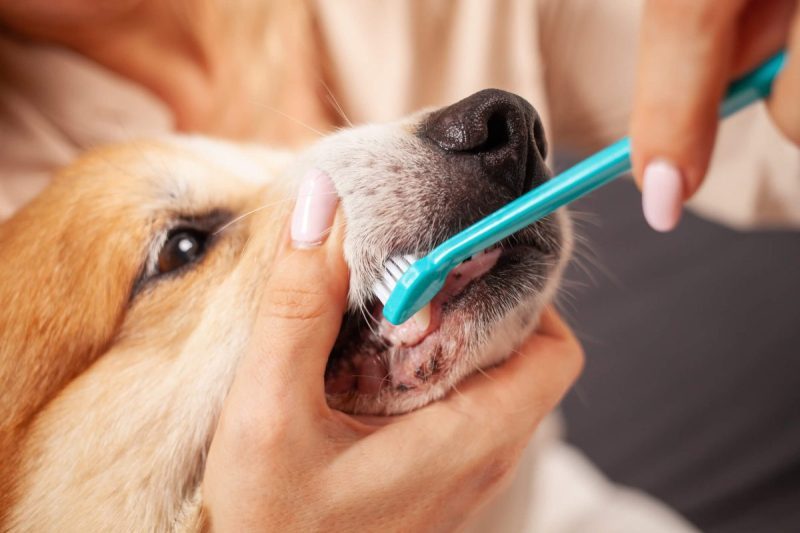
Did you know that by the age of three, 80% of dogs show signs of dental disease? Just like us, our pets need regular dental care to stay healthy. Brushing their teeth is the simplest way to prevent serious health issues such as periodontal disease, bad breath, and even systemic conditions that arise from bacterial infections. While it might seem daunting at first, with the right tools, techniques, and a bit of patience, you can make toothbrushing a positive and even enjoyable experience for your furry friend. Here’s a comprehensive guide on how to brush your dog’s teeth effectively.
Choosing the right tools
Brushing your dog’s teeth isn’t just about grabbing a toothbrush and getting to work. To ensure the process goes well, it’s important to gather all the necessary supplies beforehand. Here’s what you’ll need:
- Dog toothbrush: These brushes are specially designed for dogs and usually feature softer bristles. You can choose from different types such as finger brushes or dual-headed brushes.
- Dog toothpaste: Never use human toothpaste, as it contains ingredients like fluoride and xylitol, which are toxic to dogs. Instead, opt for a dog-specific toothpaste, which comes in flavors like chicken or peanut butter to make the experience more enjoyable for your pet.
- Towel or cloth: A towel or cloth can be useful for cleaning up any mess and wiping your dog’s mouth if needed.
- Treats and rewards: Positive reinforcement is key. Have some of your dog’s favorite treats handy to reward them throughout the process.
Preparing your dog for brushing
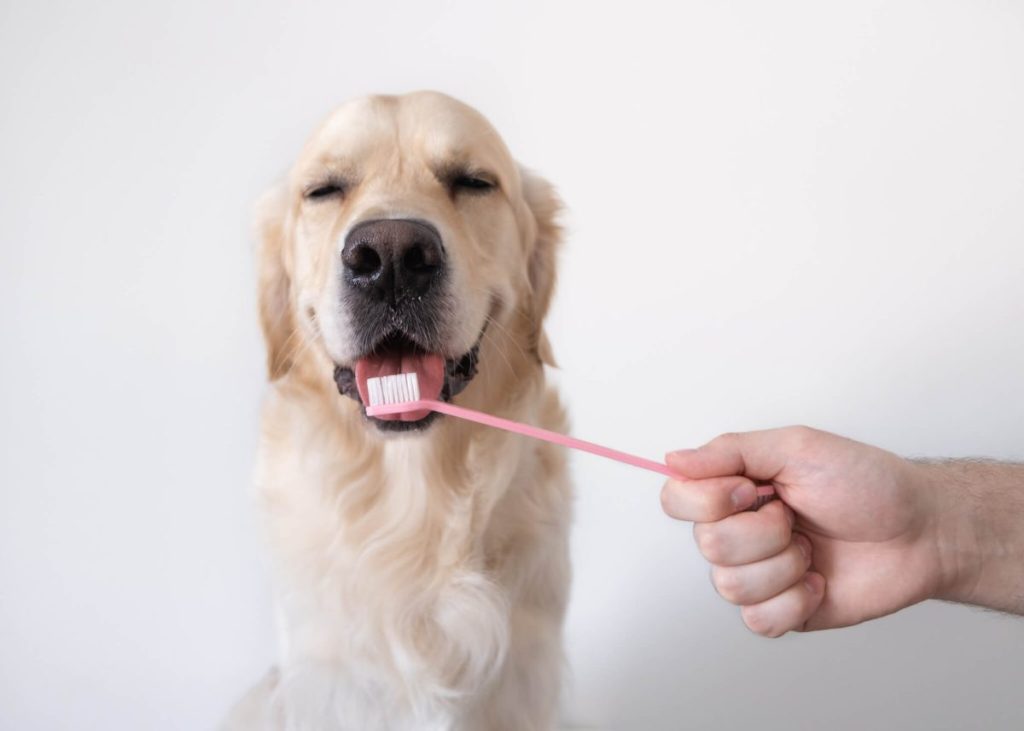
Before diving into the actual process of tooth brushing, you first want to make sure your pet is comfortable with the idea. Start by getting your dog accustomed to having their mouth handled. Gently lift their lips and rub your finger along their gums and teeth. Doing this regularly will help your dog become familiar with the sensation and less likely to resist when you introduce a toothbrush. It’s essential to be patient and maintain a calm demeanor during this process, as dogs are highly perceptive and can pick up on any anxiety or frustration you may feel.
How to brush your dog’s teeth?
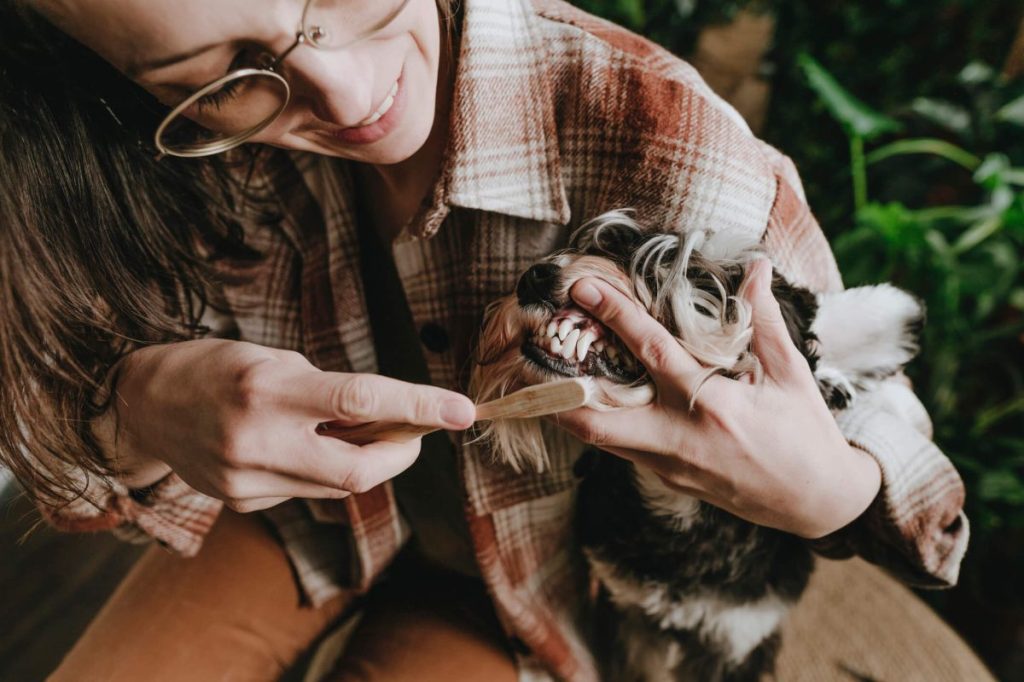
Once your pup is comfortable with the preparations, you can move on to the actual brushing. Here’s a step-by-step guide on how to brush your dog’s teeth properly:
Step 1: Create a calm environment
Choose a quiet, comfortable space where your dog feels safe and relaxed. The first few brushing sessions are crucial for setting a positive tone, so eliminate as many distractions as possible. If your dog is particularly anxious, try playing some soothing music or using calming pheromone sprays to help them feel more at ease.
Step 2: Position your dog properly
Find a comfortable spot where both you and your dog can sit. Ideally, have your dog sit or lie down in a position where you can easily access their mouth. For larger dogs, it might be helpful to have them sit while you stand or kneel beside them. For smaller dogs, having them on your lap or a counter can make the process easier.
Step 3: Apply toothpaste to the brush
Squeeze a small amount of dog toothpaste onto the brush. A pea-sized amount is usually sufficient. Allow your dog to lick the toothpaste off the brush first if they are hesitant. This can make them more accepting of the brush when you start the actual cleaning process.
Step 4: Lift the lips to expose the teeth
Gently lift your dog’s lips to expose their teeth and gums. Use one hand to lift the lip and the other to hold the toothbrush. Be sure to be gentle and not force your dog’s mouth open; this can cause stress and make future brushing sessions more difficult.
Step 5: Start brushing the outer surfaces
Begin by brushing the outer surfaces of your dog’s teeth — the ones that face the cheeks. Hold the toothbrush at a 45-degree angle to the teeth and use gentle, circular motions, similar to how you would brush your own teeth. Start with the front teeth and gradually move toward the back, brushing a few teeth at a time. Aim for at least 30 seconds on each side of the mouth.
Step 6: Move to the inner surfaces
Once your dog is comfortable with you brushing the outer surfaces, you can start to brush the inner surfaces of the teeth. This step might take some practice, as dogs are usually less cooperative when it comes to brushing the inner surfaces. Use the same gentle, circular motions and be patient. If your dog resists, try to do a little at a time and gradually increase the duration as they become more accustomed to the process.
Step 7: Brush the molars
The molars are especially important to brush because they are prone to plaque buildup. These teeth are located at the back of the mouth and may be more challenging to reach. Use a longer toothbrush if necessary and continue with gentle, circular motions. Make sure to spend a bit more time on the molars to ensure they are adequately cleaned.
Step 8: Pay attention to the gum line
Pay extra attention to the gum line, where plaque and tartar tend to accumulate. Brush gently to avoid irritating the gums but ensure you are effectively cleaning this area. Massaging the gums can also help promote good oral health by stimulating blood flow.
Step 9: Check for any issues
While brushing, take the opportunity to check your dog’s mouth for any signs of dental problems, such as red or swollen gums, loose teeth, or bad breath. If you notice anything unusual, consult your veterinarian for a thorough dental examination.
Step 10: Rinse and reward
After you’ve brushed all the teeth, let your dog drink some water to rinse out their mouth. Finally, reward your dog with a treat or extra playtime to reinforce positive behavior and make future brushing sessions easier.
What to do if your dog won’t let you brush their teeth?
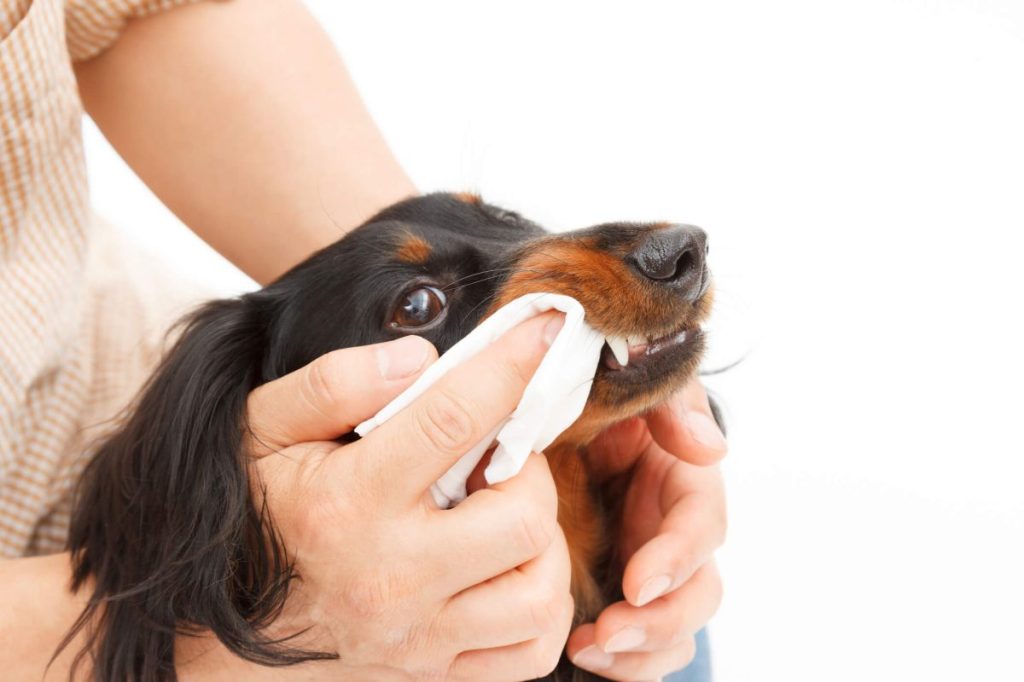
If your dog is particularly resistant to having their teeth brushed, approach the task with patience and creativity. The goal is to make the experience as positive as possible. Use treats or favorite toys to distract and reward your dog. Gradually acclimate them to the toothbrush and toothpaste by letting them sniff and lick these items before attempting any brushing. Remember to take breaks if your dog shows signs of stress or anxiety, as forcing the issue can lead to a negative association with brushing. Consistency is important, so even short sessions daily can build your dog’s tolerance over time.
If brushing proves impossible despite your best efforts, there are alternative solutions to maintain your dog’s dental health.
- Dental chews and toys: There are various dental chews and toys designed to help clean your dog’s teeth while also satisfying their natural chewing instinct. Look for chews that are specifically formulated for dental care, as they often contain ingredients that promote oral health.
- Dental wipes: Dental wipes are an effective alternative to brushing. These wipes are designed to clean your dog’s teeth and gums and can be easier to use than a toothbrush.
- Oral rinses and water additives: Products like oral rinses or water additives can help reduce plaque and freshen your dog’s breath. They are usually easy to administer and well-tolerated by dogs.
- Dietary solutions: Some dog foods and treats are specifically formulated to promote dental health. Consult your vet for recommendations on dental diets that could benefit your dog.
It is worth noting that while these alternatives are helpful, they should not replace traditional brushing entirely. They can, however, significantly support your dog’s oral hygiene when brushing isn’t possible.
How often should you brush your dog’s teeth?
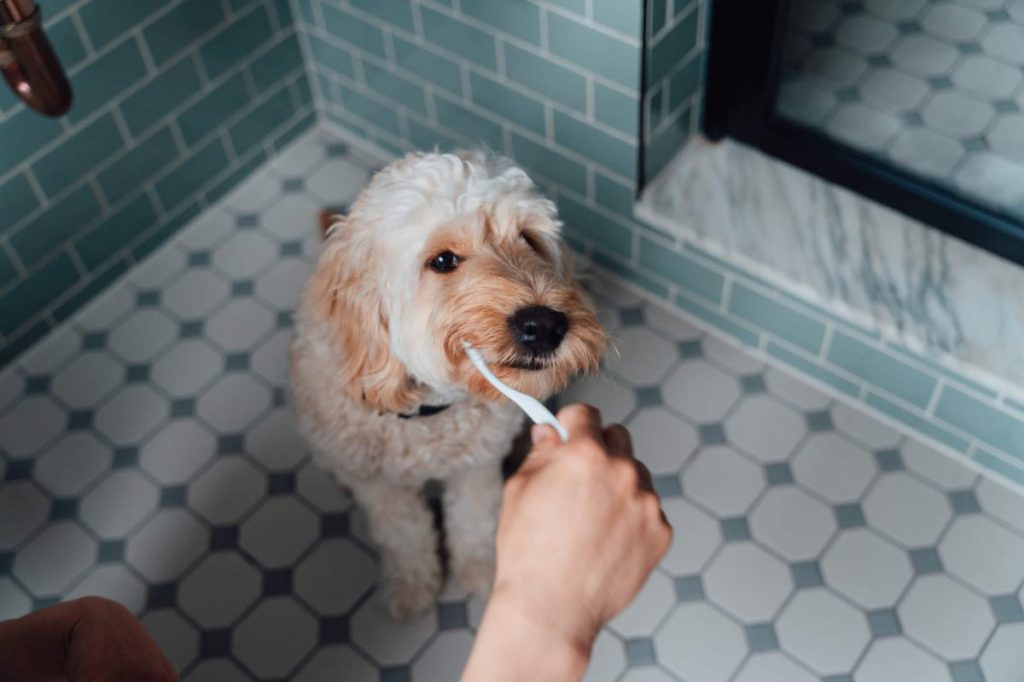
Ideally, you should aim to brush your dog’s teeth daily. This might sound excessive, but just like in humans, plaque begins to form on a dog’s teeth within 24 to 48 hours after eating. If not removed regularly, this plaque can harden into tartar, which is much more difficult to remove and can lead to periodontal disease, bad breath, and even tooth loss. Daily brushing ensures that plaque is regularly eliminated before it has a chance to calcify.
That said, some pet parents might find daily brushing challenging due to time constraints or their dog’s temperament. In such cases, brushing at least three to four times a week is generally sufficient to keep plaque and tartar buildup at bay — especially if combined with other dental care measures. The more regularly you can brush, the better the outcome for your dog’s dental health. As such, starting this habit when your dog is young can also help make the process easier and more effective as they grow older. If you’re unsure about the best brushing routine for your pet, consult with your veterinarian for advice.
Maintaining your dog’s dental health
Apart from daily brushing, regular professional cleanings are essential for maintaining your dog’s dental health. Veterinarians recommend scheduling a dental checkup at least once a year to catch any potential issues early. These cleanings not only help to remove stubborn plaque and tartar that can’t be managed at home but also allow your vet to check for signs of gum disease, tooth decay, or other oral health problems that might require more intensive treatment.
Above all, patience and persistence are key. Dental care is a lifelong commitment to your dog’s health, and while it may take time for your pooch to get used to the process, the benefits far outweigh the challenges. Keep the toothbrushing experience as stress-free as possible for both you and your dog, and remember that gradual progress is still progress.